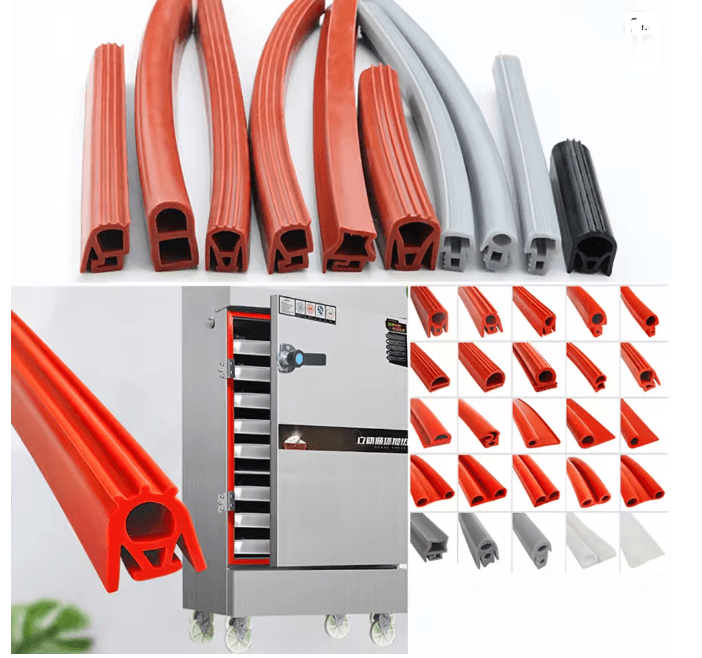The oven door seal
2025-07-18

The oven door seal is a key component to ensure the airtightness and thermal insulation performance of the oven. It is mainly used to prevent heat loss and external cold air from entering. The following is a comprehensive summary of relevant information:
1. Main types and materials
Silicone seal: The most common, high temperature resistant (usually up to 150-300℃), with excellent resilience and anti-aging performance, such as E-type, P-type, M-type and other special-shaped designs.
EPDM rubber: Strong weather resistance, suitable for environments with large temperature differences, but slightly inferior to silicone in high temperature resistance.
Fiberglass seal: Used in some industrial ovens, high temperature resistant but poor elasticity.
2. Key points for purchase
Temperature range: Need to match the working temperature of the oven (generally 150-250℃ for home use, and may be higher for commercial use).
Sealing performance: Choose a style with self-adhesive or slot design, such as E-type strips, which can better fit the door gap.
Size matching: The thickness and length of the door frame need to be measured, and the common thickness is 6-10mm.
3. Replacement and installation steps
Remove the old sealing strip: Use a screwdriver to remove the fixings or directly tear off the remaining adhesive strip.
Clean the door frame: Remove the glue stains and dirt, and ensure that the adhesive surface is flat.
Install the new sealing strip:
Self-adhesive type: Tear off the adhesive protective film and press from the top to fit.
Screw-fixed type: Align the holes and tighten with screws.
Test the sealing: Check whether it is tight after closing the oven door. You can use paper to test it.
4. Common problem handling
Door is not closed tightly: It may be that the sealing strip is aging and deformed and needs to be replaced.
Mold or stains: Wipe with a mild detergent and avoid corrosive chemicals.
The next one:







